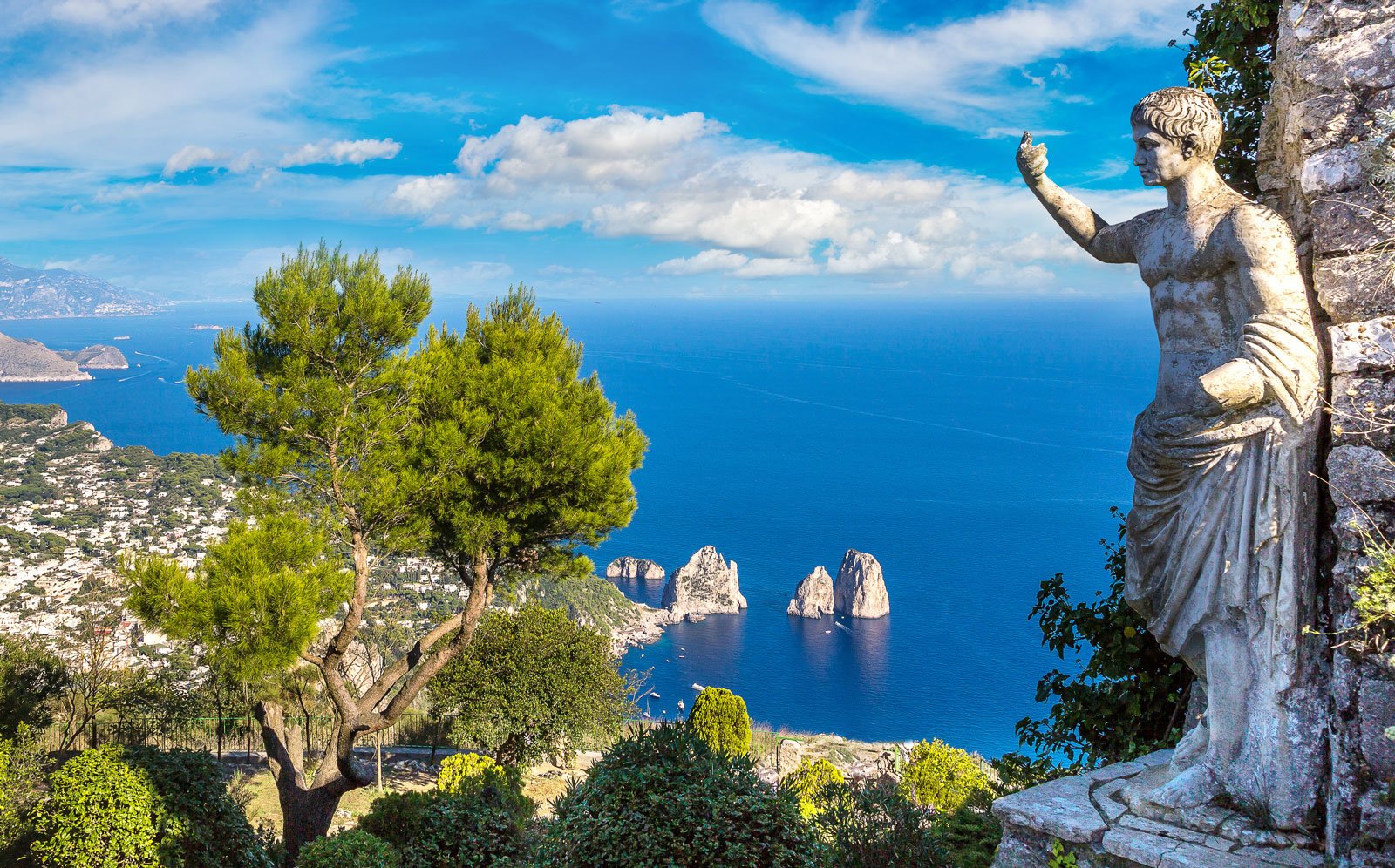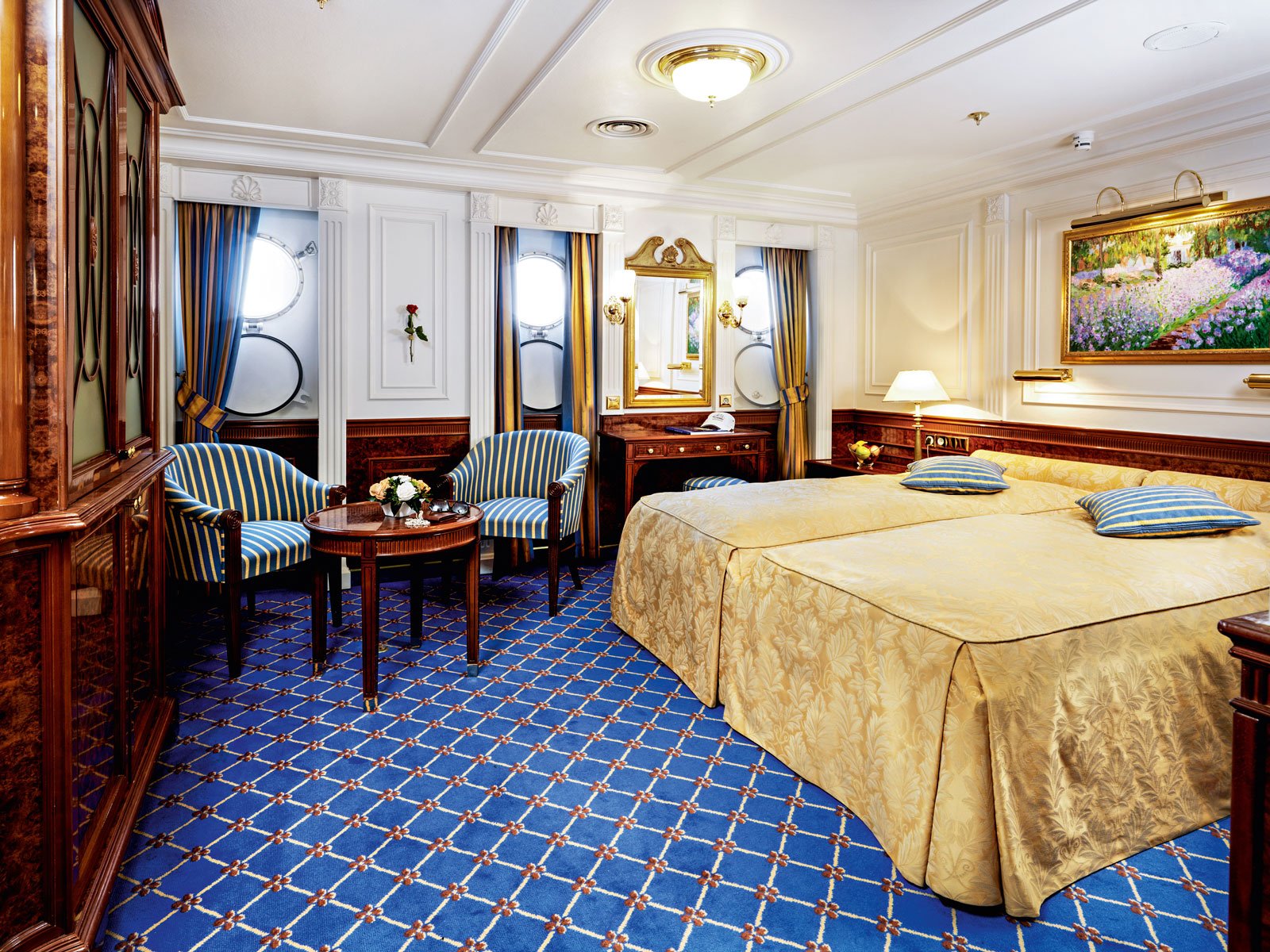Seen from the sea: A voyage aboard Sea Cloud II
By Robert Veel
A voyage aboard Sea Cloud II affords you the opportunity to experience the Mediterranean the way that travellers of the past experienced it. Slow travel, from a time when it was the sea, rather than the land or the air, that connected peoples and cultures.
Limelight Arts Travel director Robert Veel has had the good fortune to host several groups aboard the Sea Cloud II on journeys from Venice to Malta and on circumnavigations of Sicily. In 2017 he followed in the footsteps of Christopher Columbus, champagne in hand, travelling across the Atlantic from the Canary Islands to Barbados in the Caribbean. These journeys have given him plenty of time to contemplate what makes a journey on Sea Cloud II so special. We asked Robert to share his thoughts and experiences in a Q&A.
Approaching Sea Cloud II by tender is always a remarkable experience (image with kind permission, Alan Fieldus)
What makes it different from a regular cruise?
The first thing that strikes you are the physical differences. Sea Cloud II is a 105-metre, three-masted barque. Modelled on sailing ships of the early twentieth century, the decks and many fittings are timber with brass trim, all meticulously maintained by the crew. The rigging is made of steel cables and hemp rope, and the sails are canvas. There is an extravagant amount of deck space compared to the number of passengers, with plenty of room to relax in a deck chair, share a drink in the Lido bar or just gaze at the horizon. Sea Cloud II has just 47 cabins and usually carries 60 to 80 passengers. There are indoor and outdoor dining areas. Of course there are also some luxury features, including a small spa, gym and a well-equipped medical centre.
These physical differences are apparent when you step on board, but the most significant difference from a conventional cruise ship only becomes apparent some time after you’ve left port. Sea Cloud II is a sailing ship. As soon as possible into the cruise the captain will give the order for the sails to be set. It’s a magnificent moment as crew climb the rigging and scuttle along the yard arms to release the sail ties, while colleagues on deck haul out the sheets and raise the yard arms. The motors switch off and all of a sudden you’re sailing to Byzantium, or wherever it is you’re heading.
This moment sets the tone for the whole experience – it’s as much about the voyage as the destination. It’s slow travel, it’s a little more sustainable than a motor-only cruise and you are in touch with the elements: air, sea and (hopefully) sun.
Sun, sea and sails on Sea Cloud II’s comfortable Lido deck
Sea Cloud II? There must have been a Sea Cloud I. What’s the story?
Sea Cloud II was launched only in 1999, but takes its inspiration from its sister ship, Sea Cloud, launched in 1931.
Sea Cloud has quite a story to tell. It was built as a luxurious private yacht for businesswoman Marjorie Merriweather Post. Post was a remarkable entrepreneur from the mid-west of the USA, transforming the company she inherited, Post Cereals, into General Foods, a giant in the USA.
In World War II Sea Cloud saw active service with the US Navy and was later acquired by the ruler of the Dominican Republic Rafael Trujillo, used as a government office until Trujillo’s assassination in 1961. The ship was left to rot in Panama after an ownership dispute, then to deteriorate in the tropics. It was eventually rescued by a group of Hamburg-based shipping enthusiasts, who meticulously restored it and began carrying passengers on short cruises.
The original Sea Cloud was built for the pleasure of its owners and a small group of guests. It’s authentic and luxurious, but not really suitable for more than a handful of travellers; many of the cabins are actually not that comfortable. The owners decided to build a somewhat larger sister ship, Sea Cloud II. With more deck space and consistently sized cabins, it’s a happy trade-off between the charm and style of the original Sea Cloud and the creature comforts expected by contemporary travellers at the luxury end of the market.
A benefit of cruising on a smaller ship is the ability to dock in smaller ports with sites of great interest, such as Capri
Isn’t cruising a bit superficial? How do you get context and authenticity when you’re on a cruise?
It’s all about the planning. Sea Cloud II’s cruise calendar includes both culturally-themed itineraries and summer holiday escapes. Limelight Arts Travel chooses only the former, and only those itineraries where significant cultural and historical themes can be pursued before, during and after the cruise.
So the ports of embarkation and disembarkation are key aspects of the cruise for us. To provide context we begin with several nights on land, taking a close look at the history and culture of the port of embarkation, and places nearby. During the cruise we offer daily background talks and we tend keep our shore excursions simple and focused, wherever possible choosing sights that are off the mass-tourism pathway. After disembarkation we continue our in-depth exploration with a land-based segment, perhaps four to six nights. This allows us to take a closer look and visit inland sites that are not accessible by ship.
A comfortable Category E cabin aboard Sea Cloud II
What are the cabins like?
All of the cabins on Sea Cloud II are extremely comfortable, however it’s the clever design that stands out. They run from the centre of the ship to the hull, so they are long and narrow. As you enter you have a long corridor with a wardrobe to one side and the bathroom to the other. There are adjacent twin beds and then a living area near the portholes. In keeping with the style of the original Sea Cloud, all the finishes are timber with brass trim.
The E-grade cabins that Limelight Arts Travel uses are 16-metres squared. This is a little on the small side in comparison with a hotel room on land, but the design is just about perfect, so every centimetre is used effectively. It is possible to upgrade to a slightly larger D-grade cabin, whose major advantage is that these are midships and therefore a little less subject to the movement of the oceans. But really, the E-grade cabins are just fine.
A full day under sail allows time to relax on deck, with morning tea, a book and an awe-inspiring backdrop!
Who are the other travellers?
Within about 10 minutes of meeting, your fellow passengers will tell you that they do not normally ‘do cruises’. They are, like you, also seasoned travellers. They tend to be relaxed, unfussy and good company. Sea Cloud II has an excellent reputation among German speakers, and so at least 50% of the passengers will be German, Swiss or Austrian, with a mix of US, English and Commonwealth countries making up the balance. Of course, when there’s a Limelight Arts Travel group aboard the balance changes a little. Some organisations, such as the Metropolitan Museum of Art in New York, even charter the Sea Cloud II in its entirety for private cruises.
Sea Cloud II is a premium experience, and this is reflected in the pricing. You won’t find family groups or backpackers at your dinner table, that’s for sure.
Meals on board range from casual lunches on the Lido Deck to formal dinners, with fresh and local cuisine
I guess they serve food and wine aboard?
For me, the greatest challenge of hosting a group on Sea Cloud II is resisting all the wonderful food and wine. There’s a real emphasis on local produce, so a trip around Sicily, for example, will mean dinners of tuna purchased at the markets that morning, accompanied by a glass or two of Grillo or Nero d’Àvola. Lunches, and a few of the dinners, are served buffet-style on the Lido deck and very relaxed. There’s no shortage of salads and vegetable-based dishes.
The dinners tend to be a bit more formal, and the cuisine a little more refined. I usually find myself skipping one or two dinners so that I can still fit into my clothes at the end of the cruise!







